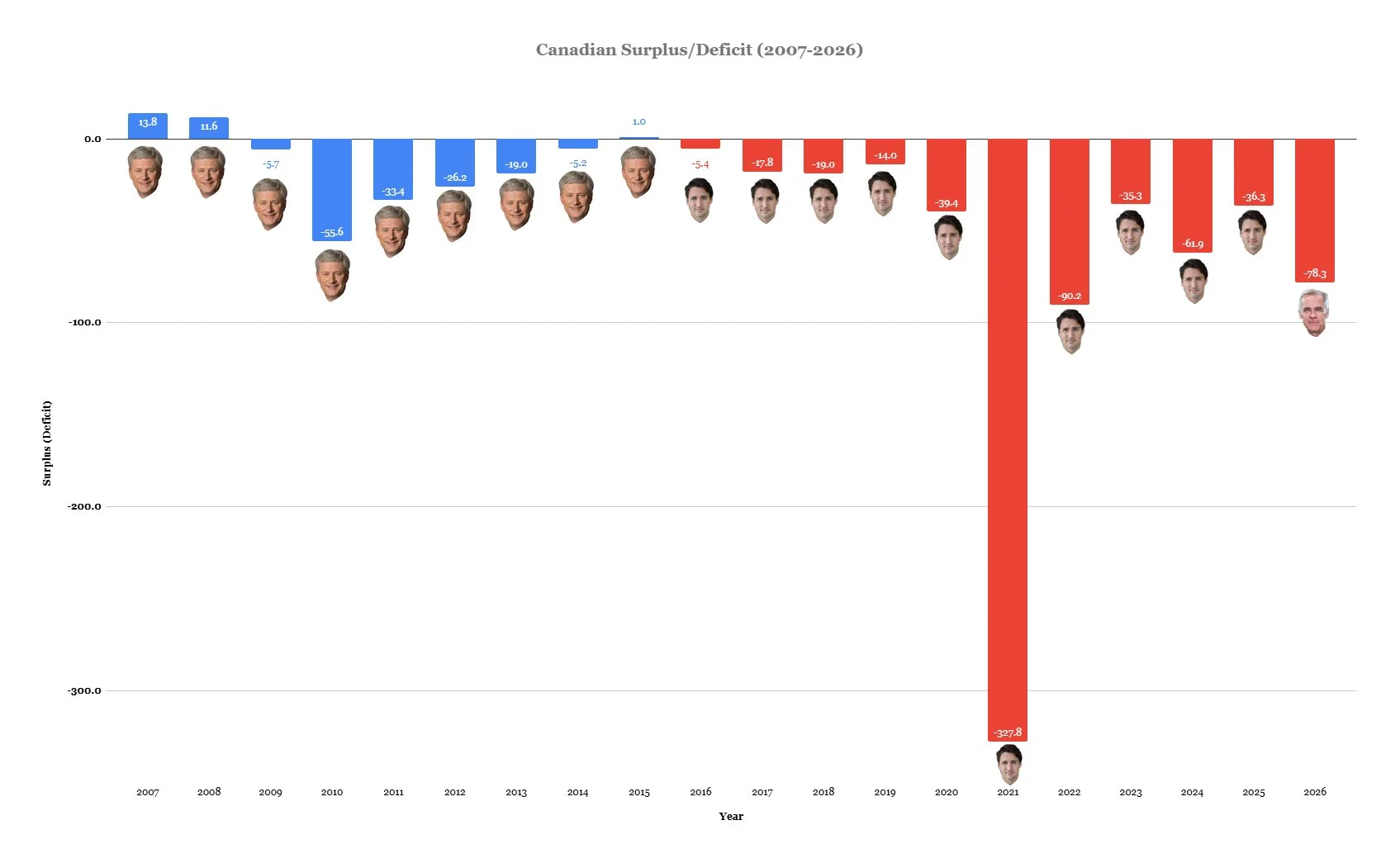Carney unveils the 2026 budget, what does BC get?
(Image courtesy of CBC)
On Tuesday, Prime Minister Mark Carney and Finance Minister François-Philippe Champagne unveiled the 2026 Canadian federal budget, the first during Carney’s tenure as Prime Minister. Before the release, Carney touted that the budget would make “generational investments” in the Canadian economy, and Champagne said that it would “unlock [Canada’s] full potential.” However, upon further review, the consensus is that it is a standard Liberal budget, not too far from Carney’s predecessor, Justin Trudeau. For BC, the budget mentioned fast-tracking of resource extraction projects in Kitimat and Northwest BC, as well as public sites receiving funds for infrastructure improvements.
The headline for many is that the Canadian government is projected to run a total deficit of $78.3 billion for 2026, with a gradual decrease to a $56.6 billion deficit in 2030. The projected deficit from the last fiscal year was $36.3 billion.
The 2026 deficit is one of the largest in modern history
The 2026 deficit is the largest non-COVID deficit Canada has run in the 21st century. While periods such as the early 2010s were marked with deficit spending by Conservative Prime Minister Stephen Harper, by the end of his tenure in 2015, Canada’s budget was back to balance. Under Trudeau, Canada started to deficit spend, and the trend has not reversed, with no end currently in sight.
Entering the 21st century, Canada usually posted budget surpluses under the governments of Jean Chrétien, Paul Martin, and Stephen Harper. While Harper deficit-spent during the Great Recession, the deficits were modest and left office with a balanced budget. When Justin Trudeau came into office in 2015, Canada started to deficit spend even before the pandemic. This trend seems like it will continue under Carney to address the post-pandemic economic slump affecting Canada. Figures are expressed in billions ($).
Trimmed public service, reduced immigration, and trade diversification push
Other acts include cutting the civil service by 10 percent over five years. Under Justin Trudeau, the federal civil service expanded by over 40 percent, even as the population of Canada increased by only about 15 percent. Carney’s government will reduce Trudeau’s growth but still not bring it back to pre-2015 levels.
Chart courtesy of CBC.
Another priority is reducing the number of immigrants coming into Canada. This amounts to cutting permanent resident admission targets to 380,000 per year for three years, down from 395,000 in 2025, and reducing the target for new temporary resident admissions from 673,650 in 2025 to 385,000 in 2026, and 370,000 for both 2027 and 2028.
The budget outlines a trade diversification strategy as well that will “double overseas exports over a decade” and generate “$300 billion more in trade.” This comes as Carney won the 2025 election largely on a mandate of reducing Canadian reliance on US trade, as well as further strengthening Canadian relations in Europe and in Asia.
What BC gets
The Canadian budget also pledges measures to help BC’s economic sector. First of which is establishing a Major Projects Office (MPO) to “serve as a single point of contact to get nation-building projects built faster” and “work to fast-track [the] development” of projects deemed vital to the national interest. For BC, the government has currently designated the LNG Canada Phase 2 project in Kitimat and the Red Chris Mine expansion in Northwest BC as falling under these provisions. The government has also designated BC’s Golden Triangle as an area for further critical mineral development and part of its “Critical Minerals Strategy” to make Canada “a powerhouse in the extraction and upgrading of critical minerals.”
As part of the Canada Community-Building Fund, which will become the initiative’s Community Stream, four BC public sites will receive money for improvements. The four sites are:
Filipino Community and Cultural Centre in Metro Vancouver, British Columbia;
White Rock Pier in White Rock, British Columbia;
Newton Athletic Park Artificial Turf, Practice Field, Tennis Court, and Walking Path in Surrey, British Columbia;
Royal Athletic Park in Victoria, British Columbia
BC got four sites designated, the same amount as Ontario and Quebec, despite having a smaller population. Perhaps this shows the influence of Minister of Housing and Infrastructure Gregor Robertson, who represents Vancouver Fraserview—South Burnaby, as well as being the former Mayor of Vancouver. However, the budget provided no monetary commitments to each project.
Vote of confidence for Carney
With the budget presented, the main hurdle now remains whether Carney can get the votes to approve it, though the picture is optimistic. While all opposition parties have signaled gripes, it is likely to pass, as voting against it and sending Canadians back to the polls, especially with the Liberals still ahead in public opinion, would probably result in blowback for the Conservatives, NDP, and the Bloc. All in all, despite the budget being more normal than expected, Carney still seems to hold the upper hand in parliament.




